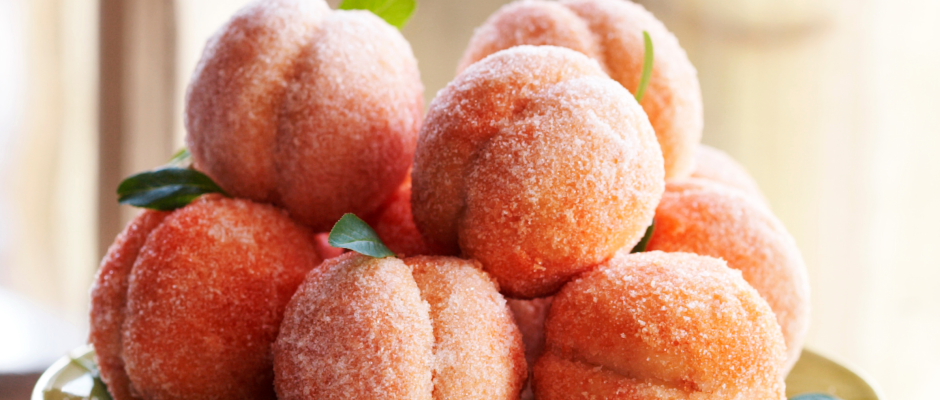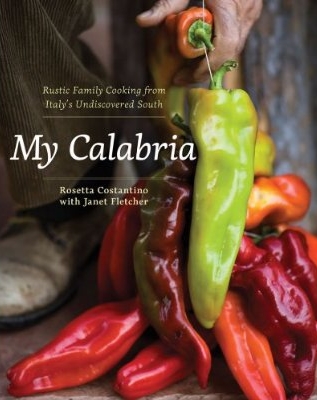Thanks to Rosetta Constantino's My Calabria (written with Janet Fletcher) and the interest it has sparked in me, I feel as though the old toe is finally beginning to heal. The book is a long-overdue source of pride and celebration for those of us whose families emigrated from there. For those who are not of Calabrese heritage, it brings this remote area of Southern Italy closer; it sheds light upon the cuisine of a region that has been largely ignored by the rest of the world. Through its writing, recipes, and gorgeous photography by Sara Remington, the warmth of this previously mysterious land have been translated into words and flavors and images we can all understand.
It's little wonder I like to refer to this book as "My Rosetta's Stone."
"When I was young, I didn't appreciate how clever Calabrian cooks were in making so much from so little," says Constantino in her introduction. "Simplicity is the cuisine's hallmark, resourcefulness the Calabrian cook's signature and strength." When I sat down among the other guests on the terrace of Constantino's home in the Oakland Hills, simplicity and resourcefulness underscored the menu-- all of the vegetables prepared for the meal came directly from her garden: San Marzano tomatoes, eggplant, onions, zucchini, and peppers both sweet and hot. All those staples of Calabrian cuisine surrounded us and were, appropriately enough, ripe for the picking.
As I chatted with other guests, I found myself tucking into one of the many simple dishes that can be found in her book, Peperoni Fritti con Acciughe (Whole Fried Sweet Peppers with Anchovies, page 241). Tasting the ripe, blistered intensity of a sweet pepper paired with the salty umami boost of one, perfect anchovy slipped inside of it took was like taking a summer holiday to a place unknown but strangely familiar. That the plant which gave birth to the pepper I was chewing was brushing up against my leg made the effect all the more satisfying. And pleasurably surreal. I went back for more.
Near the end of the meal, when her guests were warmed by the enviable combination of sun, good food, and wine, all the friendly chatter momentarily stopped when Rosetta descended the stairs with dessert. As I tried to focus on the platter she was carrying, I squinted a moment, quickly assessed its content, and thought to myself, "Sugared peaches?" I wasn't so much disappointed as I was confused. To roll perfectly ripe peaches in sugar seemed wholly unnecessary and decidedly un-Calabrese in its lack of simplicity. But what did I know?
As Rosetta and her mother plated up the peaches with bowls of ricotta gelato (page 345) and began passing them around, the chatter among the guests returned. Upon closer inspection, the "peaches" were, in fact, little hemispheres of sponge cake held together by pastry cream, shaped and colored to fool the eye. I looked at mine before I cut into it and thought that, besides looking so peach-like, it reminded me of a human brain. It was that smart. And good. The ingenuity of these Pesche con Crema (page 333) made me think that, if the 'Ndrangheta ever decided to use their powers for good, the might do well to take a cue from the pastry chefs of Calabria by channeling their energies and trickery into the making of some rather fascinating desserts.

When the luncheon was over, I felt warm and full and connected to a cuisine that has so long been overshadowed by Sicilian food in my family. Rosetta signed my copy of My Calabria with the words "Keep our Calabrian traditions alive." I swelled with a pride I've never felt before for a place I've never been and I cuisine I had never tasted until that day. It was an odd, wonderful feeling.
I have no intention of ever giving up on the Sicilian traditions of my family. They will, however, have to make room for some new (to me) Calabrian ones. I'm planning on obeying the command of Rosetta Constantino by keeping the traditions of her family and mine (however distant) alive. Learning more about the culture and cuisine of my Calabrese side has provided a sort of balance, culturally speaking.
With one historic foot planted in Sicily and another more recently-secured one in Calabria, I like to think that I might, on occasion, bridge the two cultures, as they have been genetically brought together in me. Two similar yet very distinctive traditions; one no more important than the other to me. No Scylla and Charybdis preventing the crossover.
As odd or as hopelessly corny as it may sound, even though I'm only half-Italian, after cuddling up to My Calabria, I feel just a bit more whole.
No, really.
And though I have not yet gotten up the nerve to make those "peaches," I have made the roasted peppers with anchovies. In fact, I have followed Rosettas advice below and slipped them between two slices of crusty bread.
To put my feelings about it into plain Calabrese: Oy. Veh.
Peperoni Fritti con Acciughe*
It is worth seeking out elongated sweet Italian pepper for this recipe instead of bell peppers. Look for them in farmers' markets and specialty produce stores beginning in late July. The have thin skins that don't need peeling and relatively thin walls, so they soften quickly when pan-fried. The anchovy fillet tucked inside softens, too, seasoning the pepper flash with its saltiness. You can cook the peppers several hours before serving and keep them at room temperature.
We eat peperoni fritti as a side dish, but they're appropriate as part of an antipasto course and delicious tucked between two slices of crusty bread for a sandwich. Don't leave the stove while the peppers are frying or you could burn them beyond recovery. You really have to baby them.
8 long sweet Italian-style peppers, red, green, or a combination
8 flat anchovy fillets
Extra virgin olive oil
Kosher salt
With a paring knife, cut out the stem and core of each pepper, leaving the seeds and ribs inside. Insert one anchovy fillet into the cavity of each pepper.
Put 1/4 inch (6 millimeters) olive oil in a 12-inch (30-centimeter) skillet. Add the peppers in a single layer. It's okay if they fit snugly. Turn the heat to moderately high. Cover and cook until the peppers are blistered on all sides, about 10 minutes, turning every 2 to 3 minutes. To minimize splattering, remove the pan from the heat before you uncover it to turn the peppers. Keep a close eye on the peppers to prevent burning.
Transfer the peppers to a serving platter and sprinkle them lightly with salt, keeping in mind that the anchovies are salty. Drizzle with a little olive oil from the pan. Serve at room temperature.
Serves 4
 About a month ago, I received an email from a woman named Roberta Klugman asking me if I remembered the conversation we'd had more than a year ago about an upcoming cookbook called My Calabria when she came to lunch at my restaurant.
About a month ago, I received an email from a woman named Roberta Klugman asking me if I remembered the conversation we'd had more than a year ago about an upcoming cookbook called My Calabria when she came to lunch at my restaurant.